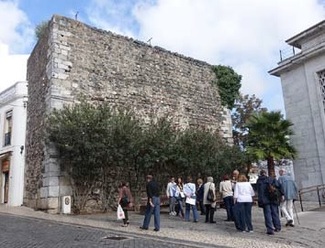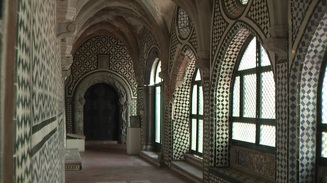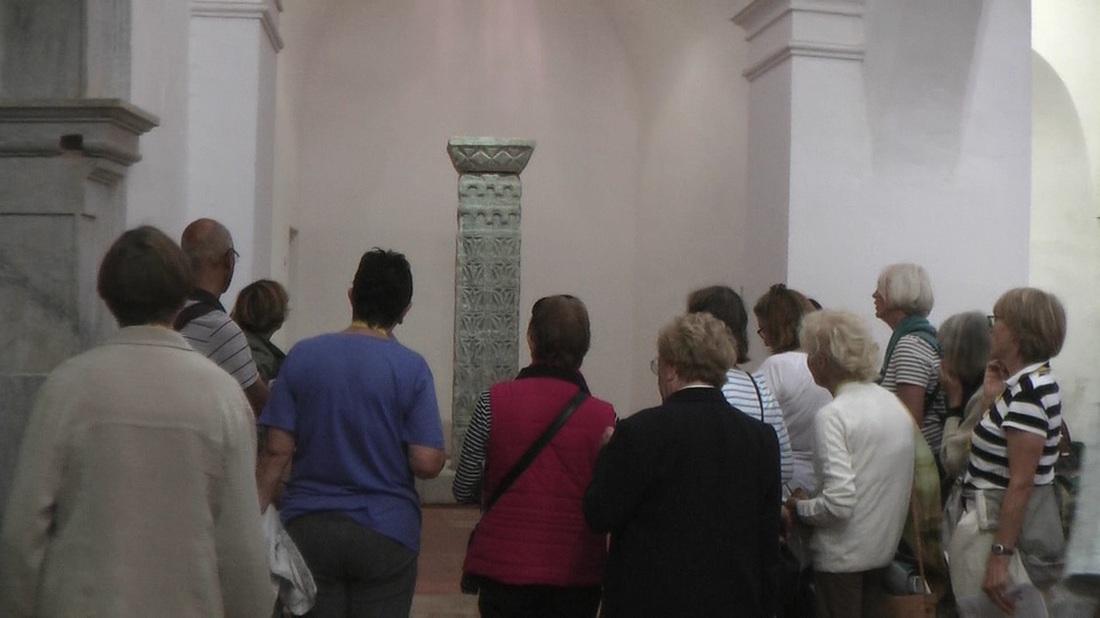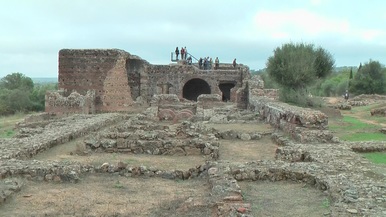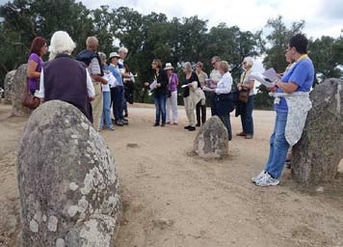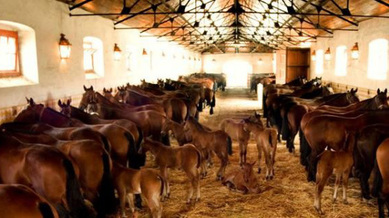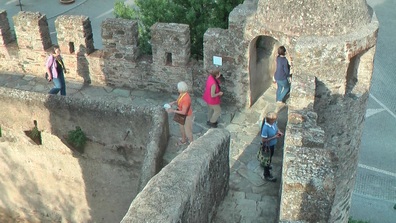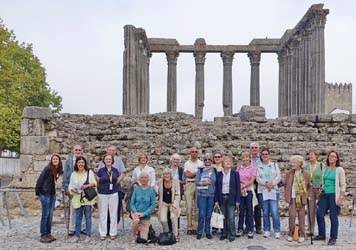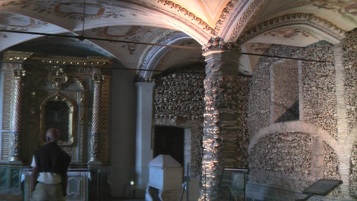2015 - October : AAA visit to Beja and Évora
Once again our visit was organised and guided by our friends Fatima and Catarina of ‘Never Ending’ (tourismo tematico by Eon) – the tour was entitled ‘Alentejo: Land of Passions’.
|
|
The tour of Beja continued on to the Senhora da Piedade Chapel where recent excavations have revealed fragments of walls that predate the existing building. Later we visited Santo Amaro church – impressively covered with carved wood, painted in gold leaf dating from the 17th and 18th centuries. It is believed that this church holds the finest Visigoth collection in Portugal. Here we were told of the legend of the Lidador - Gonçalo Mendes da Maia, who at 90 years of age, is reputed to have stood up against an army of raging Moors. We also visited the castle but were unable to access the formidable tower due to ongoing restoration work. |
|
On the way to Évora we visited the impressive and well-known Roman villa of S. Cucufate. We began our tour with an excellent video, which explained the development of the site through the Roman period and beyond when part of the site was used as a monastery – having rooms painted with Christian religious murals. A tour of the buildings followed- guided by Fatima and Catarina. This important site is well worth a visit to appreciate its former grandeur and importance.
|
|
After lunch we visited the Cromleque/Menhir dos Almendres – the largest complex of menhirs in Iberia, which was first identified by Henrique Pina in 1964 and initially contained over 100 monoliths. Recent investigations have found that there were various phases of construction during the Neolithic period (5th and 4th mill. BC) up to the point where it attained an appearance similar to that we see today. The structure is roughly elliptical in shape but having had alterations and additions during all phases of the Neolithic. During its period of use the surrounding presently wooded landscape would have been very different and there would have had commanding views over the surrounding land as well as the stones having been visible from some distance. |
|
5On the third day of our visit we went up to Alter do Chão and the Real Coudelaria (Royal Stud farm) for the Lusitanian horses. The stud was established by King João V in 1784 and is now administered by the Portuguese ministry of agriculture. The complex contains not only the national stud but also a veterinary hospital and teaching complex for students. Our guided tour included the stabling of mares (in foal now) and we were introduced to some of last year’s (very friendly) foals that were allowed to wander loose in the barn. In total there are about 500 Lusitanian horses at the stud and each year sales take place. Those that are sold go for riding or driving but the higher quality animals remain at the stud for future breeding purposes. View Video : part 5 - Caudelaria Alter Real
Later in the day we visited the impressive remains of a Roman villa of Ferragial del Rey with its beautiful Medusa mosaic. This was followed by a tour of the castle in Alter do Chao and the municipal museum (Casa do Alamo). Video part 6 - Alter do Chão |
|
The final day of our tour was spent in Évora (World Heritage site) where we visited a number of historic sites including Giraldo Square, Santo Antão church, the Temple of Diana and the magnificent Cathedral. Video part 7 - Évora / 1 The main museum in Évora is well worth a visit – the collections are very well presented and our guide was excellent. Her special interest is in religious artwork and she described and explained the magnificent altar paintings that once hung in the Cathedral but are now on display in the museum. The final visit of the tour was to the extensive Capela dos Ossos (Chapel of Bones). This in its way was very impressive but perhaps for some it was somewhat disturbing and hard to appreciate. Despite that there were many visitors to the Capella. Video part 8 - Évora / 2 |
Once again we would like to thank our friends, Fatima and Catarina, who as before at Viseu made our excursion to the ‘Land of Passsions’ a most enjoyable experience.
